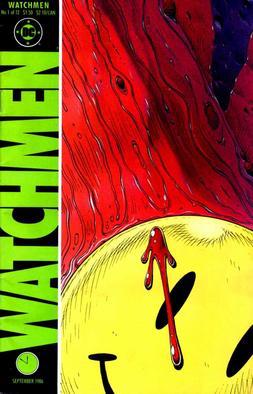Summary | Excerpt | Reviews | Beyond the Book | Read-Alikes | Genres & Themes | Author Bio

This article relates to Hey, Kiddo
In the Beyond the Book feature that accompanies the review of the graphic novel Home After Dark, there's a list of books to read – basically a graphic novel starter pack. The earliest on the list is Maus, the Holocaust-as-cats-and-mice graphic novel by Art Spiegelman, published in 1986.
 But go back eight years and you'll find A Contract with God and Other Tenement Stories by Will Eisner, published in 1978. Although historian Richard Kyle coined the term in 1964, Eisner's book is widely regarded as the first full-fledged graphic novel. When it was published, Eisner said that he had "…settled on the term as an adequate euphemism" for a comic book, and that the class he taught, called Sequential Art, was what a graphic novel really was – "a sequence of pictures arranged to tell a story."
But go back eight years and you'll find A Contract with God and Other Tenement Stories by Will Eisner, published in 1978. Although historian Richard Kyle coined the term in 1964, Eisner's book is widely regarded as the first full-fledged graphic novel. When it was published, Eisner said that he had "…settled on the term as an adequate euphemism" for a comic book, and that the class he taught, called Sequential Art, was what a graphic novel really was – "a sequence of pictures arranged to tell a story."
Eisner pushed the form to the fore. Mainstream publishers were beginning to publish long form comic books, such as Marvel and DC coming together to produce the 96-page Superman vs. the Amazing Spider-Man, and after success with its Marvel trade paperback reprints, Simon & Schuster forged ahead with an original graphic novel called The Silver Surfer: The Ultimate Cosmic Experience. And there were still more, including science fiction adaptations by Howard Chaykin and Tantrum by Jules Feiffer, but Eisner's A Contract with God was the graphic novel that, perhaps, influenced future graphic novelists the most.
 Eisner's four stories in A Contract With God, set at 55 Dropsie Avenue in the Bronx, explore intense and intriguing ideas, which included rage against God for taking away someone at a young age, and a man seduced by a singer almost to the point of rising up from his alcoholism. These stories gave other writers permission to explore the same wide range of topics. For example, Alan Moore and Dave Gibbons' Watchmen (1985) presented an alternate universe in which the activities of superheroes are deemed illegal by a government still headed by Richard Nixon. More and more artists found that they had room to finally tell the stories that perhaps wouldn't have fit into a novel but could easily pop to life as "sequential art", as Eisner put it.
Eisner's four stories in A Contract With God, set at 55 Dropsie Avenue in the Bronx, explore intense and intriguing ideas, which included rage against God for taking away someone at a young age, and a man seduced by a singer almost to the point of rising up from his alcoholism. These stories gave other writers permission to explore the same wide range of topics. For example, Alan Moore and Dave Gibbons' Watchmen (1985) presented an alternate universe in which the activities of superheroes are deemed illegal by a government still headed by Richard Nixon. More and more artists found that they had room to finally tell the stories that perhaps wouldn't have fit into a novel but could easily pop to life as "sequential art", as Eisner put it.
Memoirists and other non-fiction writers have taken the graphic novel format and turned it into something just as urgent, just as relevant, just as creative and often heartrending. In 1996, journalist Joe Sacco wrote Palestine, a deep look into the West Bank and the Gaza Strip, gathered from his own experiences there. And in the mid-2000s, Alison Bechdel wrote her memoir Fun Home and Marjane Satrapi wrote Persepolis, a chronicle of her tumultuous life in Tehran through huge shifts in history, including the Islamic Revolution.
Filed under Reading Lists
![]() This article relates to Hey, Kiddo.
It first ran in the October 31, 2018
issue of BookBrowse Recommends.
This article relates to Hey, Kiddo.
It first ran in the October 31, 2018
issue of BookBrowse Recommends.
Your guide toexceptional books
BookBrowse seeks out and recommends the best in contemporary fiction and nonfiction—books that not only engage and entertain but also deepen our understanding of ourselves and the world around us.